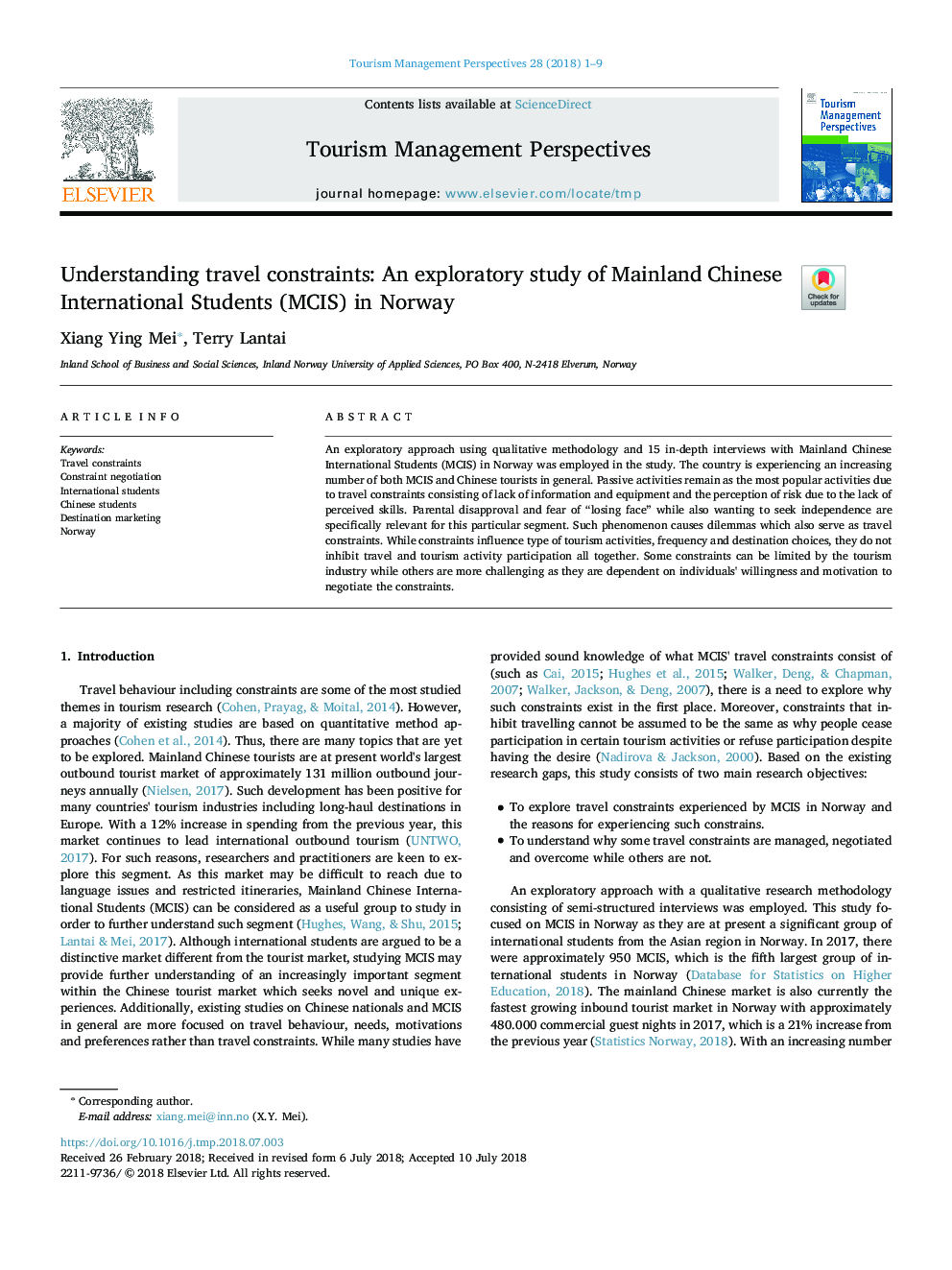| Article ID | Journal | Published Year | Pages | File Type |
|---|---|---|---|---|
| 7422375 | Tourism Management Perspectives | 2018 | 9 Pages |
Abstract
An exploratory approach using qualitative methodology and 15 in-depth interviews with Mainland Chinese International Students (MCIS) in Norway was employed in the study. The country is experiencing an increasing number of both MCIS and Chinese tourists in general. Passive activities remain as the most popular activities due to travel constraints consisting of lack of information and equipment and the perception of risk due to the lack of perceived skills. Parental disapproval and fear of “losing face” while also wanting to seek independence are specifically relevant for this particular segment. Such phenomenon causes dilemmas which also serve as travel constraints. While constraints influence type of tourism activities, frequency and destination choices, they do not inhibit travel and tourism activity participation all together. Some constraints can be limited by the tourism industry while others are more challenging as they are dependent on individuals' willingness and motivation to negotiate the constraints.
Related Topics
Social Sciences and Humanities
Business, Management and Accounting
Tourism, Leisure and Hospitality Management
Authors
Xiang Ying Mei, Terry Lantai,
